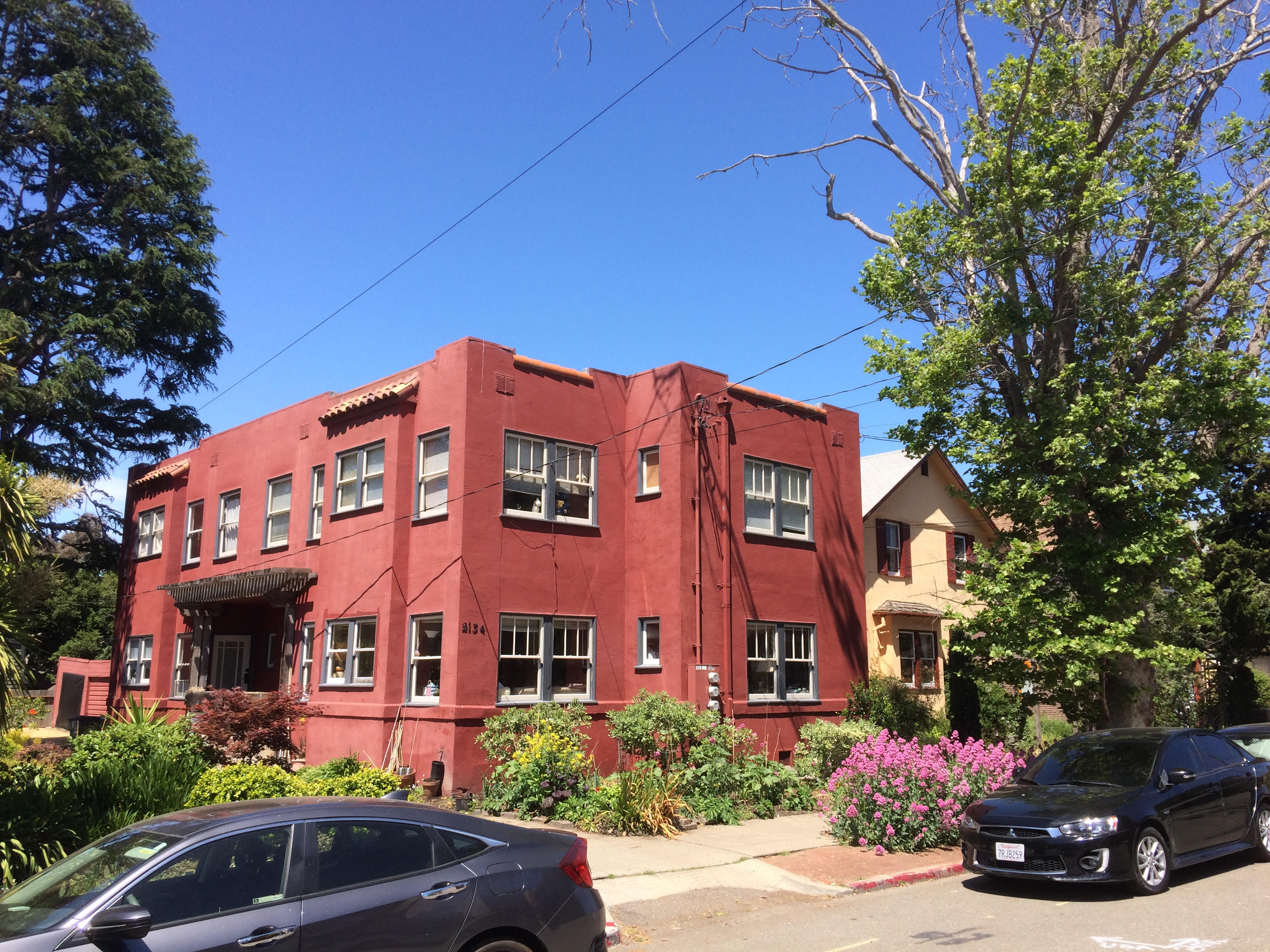By Tim Frank

Photo credit: A sunset over Berkeley by Joe Parks via Flickr Creative Commons.
Single-family zoning is something that doesn’t even exist in most other countries, yet it constitutes the majority of residentially zoned land in every state of the union and 70 percent of all residential zoning in America. It started in Berkeley, and now is coming to an end in Berkeley.
The developer who was the mover and shaker behind establishing the first single-family zoning district in America was a Sierra Club SF Bay Chapter member who served twice as Sierra Club President. That was Duncan McDuffie, a home builder from Berkeley responsible for some of the city’s most luxurious neighborhoods. McDuffie placed racial covenants on the deeds of the homes he built. He also supported segregation in the area around his developments, through a novel new zoning, in order to enhance the value of his subdivisions.
McDuffie’s developments were architecturally distinctive, and are veritable museum pieces today. Their streets follow the contours of the landscape and feature large homes on large lots in a park-like setting. You can visit them. They remain largely unchanged from the day he finished them. Though the racial covenants were struck down by the U.S. Supreme Court in 1948, the zoning endured, with no apartments to be found anywhere nearby.
Boosters of Berkeley’s single-family zoning ordinance, such as the California Real Estate magazine, publicly bragged that it would create an entire neighborhood that would remain reliably free of “Negroes and Asiatics”. What was notable about the 1916 ordinance, however, was not merely that it was racist, but that the ordinance itself could effectively segregate without using any explicit references to race. This was deliberate, implicit discrimination.
At the time, a half-dozen Mid-Atlantic states had experimented with explicit racial zoning, but were facing legal challenges based on the 14th Amendment. A city, using its regulatory authority, was not supposed to discriminate based on race.
Zoning experts helping the City of Berkeley were aware of the challenges, and suggested single-family zoning as a clever work around. It assured that only people who could afford a mortgage would live in the neighborhood. In 1916, that effectively excluded almost all people of color.
When the U.S. Supreme Court ruled in 1917 that explicit apartheid was unconstitutional, Berkeley’s ordinance became the legal alternative rapidly embraced by the rest of the nation. In 1928, then Commerce Secretary Herbert Hoover published a “Zoning Primer” that claimed everyone in America wanted to live in a Berkeley-style single-family zone and chastised cities that were not getting fully with the program.
Hoover’s Primer recognized and extolled the fact that single-family zoning would open up vast tracts of pastoral America to development, and that this development would be fully dependent on the automobile. The contours of sprawl were understood. The impact this would have on the environment was enormous. The U.S. now uses four times as much land for urban development on a per-capita basis as Europe, and American motorists burn twice as much fuel.
In hindsight, it seems obvious that sprawl represented a serious threat to the conservation agenda. But in 1928, the Sierra Club, with McDuffie as its president, said nothing. In 1934, when the Federal Government instituted its requirement for redlining, again the Club said nothing.
It would be nearly a half century before the Sierra Club would take a stand on urban land use. In the mid ‘70s, the Sierra Club’s Board appointed a committee to examine urban issues and develop a policy. Bay Chapter member Dr. John Holtzclaw, who is still active with the Club, was among them. Their work culminated with the Board adoption of an urban development policy that recognized infill development as an important antidote to sprawl and that took an unequivocal position opposing redlining. The Sierra Club became the first big environmental group to take on these issues.
In March of this year, Berkeley once again put itself on the cutting edge of zoning reform, this time joining the nascent but growing list of cities across the country that have voted to repeal single-family zoning. The Sierra Club has been at the forefront of most of these efforts. In Berkeley, Northern Alameda County Group chair Igor Tregub testified on behalf of the Club in support of the measure.
In a poetic reversal of the situation from a century ago, when an all-white council voted to adopt the single-family zoning, the authors of the measure to end exclusionary zoning included a diverse group of leaders from across the Berkeley area, including a representative of the district in which the first single-family zone was located. All nine council members supported their motion.
The design of the new rule follows the pattern established by Minneapolis and Seattle two years ago. No large buildings will be popping up in these neighborhoods. Rather, duplexes, triplexes and quadruplexes similar in size to many existing homes in these neighborhoods will be allowed.

Photo: A 1920s fourplex next to single-family home in Berkeley by Tim Frank.
These small, multi-family homes were common companions to single-family homes in older neighborhoods, and plenty of them can be found in older parts of Berkeley. Now these types of homes are called “missing middle”, a term coined by a Berkeley-based architect named Daniel Parolek. They represent a middle size between the single-family home and a large apartment complex, and provide a lower-cost alternative to the single-family home in a format that fits nicely in low-rise neighborhoods.
Minneapolis and Seattle not only set an example, but have since demonstrated that putting these reforms in place in already built-up areas can produce gradual changes in neighborhoods. This experience is emboldening more cities all around the country to consider taking the leap. In addition to Berkeley, other Bay Area communities considering new missing middle reforms of their single-family zoning districts include San Jose, Oakland and Napa.
To learn more about how you can support this sort of initiative in your city, reach out to your regional group’s chair. You can find leaders' contact information on our Leadership Roster.
Tim Frank is a member of Sierra Club's Northern Alameda County Group and a member of the team that drafted Sierra Club's 2019 Infill Development Policy.